Rhubarb and Strawberry Babka: Wild vs. Feral
New to foraging? Learn more about ethical and safe foraging (plus how to get started) here!
Once, when hiking in the middle of the woods far from any established roads with a group of fellow foragers, a friend of mine came across a plant with large, broad leaves. “It looks like rhubarb!,” she exclaimed excitedly. We all looked at our leader, herbalist Darcy Williamson, curiously, waiting for her to tell us about this clearly native plant that happened to bear an uncanny resemblance to the plant we were so much more familiar with. Instead, Darcy started to chuckle. “It looks like rhubarb because it IS rhubarb,” she said, still laughing at all of our puzzled faces. Surely she was mistaken, we were miles from any roads or homes in all directions! Once she had regained her composure, she told us that every now and then, she stumbles upon little clues to long-ago homesteads that have since vanished back into the earth… mostly.
Since that rather bizarre experience, I’ve come across apple trees peeking out from Ponderosas in remote areas of wilderness, I’ve found apricots growing in river drainages as if they’d always been there, and just recently I noticed a gigantic overgrown lilac and twin honeysuckle in bloom in a wild area of the local park, no doubt the living artifacts of someone’s long-ago cottage garden. These feral plants can stick out like a blueberry in a bushel of strawberries, or they can blend almost seamlessly into a landscape as if they belonged there from the very beginning.
If they are growing in the wild, why do I refer to them as “feral”? The answer is simple: these are plants that have escaped captivity and rewilded themselves into our landscape. They are not native to this area, though many have been here for centuries, since the first colonizers arrived on the shores of this country. The “wild” vs. “feral” conversation inevitably leads to the “but is it a weed?” question, which is more complicated than one might think.
A weed is simply an enterprising plant that is growing somewhere it shouldn’t be. The definition seems straightforward enough, but the classification will no doubt change drastically depending on who you ask. To the sort of people that pride themselves on their perfectly manicured, Kentucky bluegrass green lawns, a dandelion is most definitely a weed. To herbalists and foragers, dandelions are seen as a wonderful source of wild food and medicine; after all, they were first introduced to these soils for their many benefits! To a landscape ecologist, both the Kentucky bluegrass and the dandelions might be seen as weeds, overflowing their captivity and disrupting native ecosystems. Many “weeds” were introduced to this country because of their extraordinary potential for food and medicine, while others hitchhiked their way across oceans or mountains hidden in more viable crops. Now that I am more familiar with both native plants and introduced species, I look at a patch of weeds in a dusty vacant lot and see a salad, where most people probably just see a nuisance.
It is because of delicious weeds that the term “invasivore” has come onto the food scene. An invasivore is someone that eats a diet heavy in invasive species, things like dandelions, Himalayan blackberries, feral mustard, and Japanese knotweed. Invasivore eating is born of a love for the wilderness and local ecology and a desire to forage tasty, nutritious foods. Invasivores try to focus on the most invasive species, helping to control spreading by dining on them instead. The great thing about foraging an invasive species is that you can harvest to your heart’s content, or maybe beyond… enough to share with a neighbor, or two, or six, or twenty. It’s all part of being in tune with your landscape, looking for those clues of colonization and old homesteads, paying attention to the imbalances of feral species edging out precious native plants and working to restore balance by, well, eating some pretty delicious foods!
Rhubarb isn’t largely considered to be a weed, at least not here in the Intermountain West. It just doesn’t spread the way, say, Japanese knotweed does. The patch we found in the middle of the woods had seemingly remained more-or-less the same size in the hundred-or-so years it had occupied that space. But still, it’s a fun find when I stumble across some in the wild, about once in a blue moon! This recipe can be made with feral or garden-grown rhubarb, or you could take it in a more invasivore direction and go after the aforementioned Japanese knotweed, which bears an uncanny resemblance in flavor! If Japanese knotweed is invasive in your area, you’ll find it. If you can’t find it, whatever you do, don’t plant it! It’s extremely invasive and difficult to control, so do your ecological duty by baking it into pies, jams, and breads like this one. (Just be extra careful not to forage from areas that have been sprayed with herbicides or pesticides.)
Ironically, the big plump strawberries we get at the grocery store are usually thought of as a European fruit, but you’d be wrong - strawberries are actually native to North America! They were an important food source to tribes across its wide growing area long before colonizers arrived and discovered the sweet-tart berries for themselves. Soon, they began tampering with the tiny wild strawberries, hybridizing them to grow bigger and bigger. Strawberries made their way back across the Atlantic to Europe, where they became staples in traditional recipes and treats, which is perhaps why they are thought of as an introduced species. Indeed, the tiny but flavorful wild strawberries that can be found in the mountains are quite different from their gigantic grocery store relations… but their roots are here, as strange as that may seem.
Another plant that tricks the mind is “pineapple weed,” a low-growing plant with feathery foliage and domed green flowers that has a distinctive sweet, pineapple-like scent. It’s a relative of chamomile, but a distant one - and no, it is not some feral offshoot of the beloved herb but one that is also native to this area. How incredible it is to consider the origins of some of our favorite flavors, don’t you think? I am often surprised at what is native that I could have sworn was introduced, and vise-versa. The blurred lines between wild, feral, and “just a weed” are a fascinating door to discovery and a more intimate relationship with Nature.
Rhubarb, Strawberry, and Pineapple Weed Babka:
This festive summery wreath is full of the flavors of the season: packed with jam made from wild strawberries and feral rhubarb or invasive knotweed, with a delicious herbal fruitiness in the dough itself, thanks to dried pineapple weed and some fresh orange zest. My version of this enriched bread is vegan, using almond milk and non-dairy butter, but you can use the traditional ingredients if that’s what you’ve got! The result is rich, flaky bread layered with summery jam in a wreath that is perfect for sharing, perhaps with a cup of tea and a conversation about the beauty of feral eating.
Wild Strawberry and Rhubarb Jam:
1 c. wild strawberries, chopped
1 c. rhubarb or Japanese knotweed stalks, chopped
6 Tbs. sugar
4 Tbs. cornstarch
1 Tbs. lemon juice
Directions:
Add all of the ingredients to a small saucepan over medium heat and bring to a boil for 5 minutes. Stir while slightly mashing the fruits and reduce to a simmer until everything has broken down and become thick and sticky. Remove from the heat and cool.
Wreath:
2 Tsp. active dry yeast
3/4 c. almond milk, slightly warm
3 Tbs. sugar
3 c. plain all-purpose flour, plus more for dusting
½ c. vegan butter, room temperature
1 Tbs. finely grated orange rind
1 tsp. Powdered dried pineapple weed
Pinch of salt, if using unsalted butter
Directions:
Place the yeast, sugar, and warm milk in a medium bowl and stir to combine. Let sit in a warm place for 5 minutes or until fragrant and bubbly.
Add the rest of the ingredients to a large bowl and add the yeast mixture. Mix well to form a soft but cohesive dough, then knead for 5-6 minutes or until smooth and elastic. The dough should be soft, stretchy, and come away from the side of the bowl. (If the dough is too sticky, add a little more flour and knead it in.)
Place the dough in a large lightly-oiled bowl and cover with plastic wrap. Let stand in a warm place until doubled in size, about an hour.
While the dough is rising, make the jam (below.)
Roll the dough out on a lightly floured surface to make a large rectangle about 10” x 20” in size.
Spread the dough evenly with the jam and roll it up the long way to form a long snake. Use a sharp knife to cut the rolled dough in half lengthwise, exposing stripes of dough and jam.
Pinch together two of the ends of the cut pieces of dough, then gently slide it all onto a sheet of parchment paper. Twist the two lengths together, then form that into a ring and join the ends. Gently transfer to a baking sheet and cover with a damp tea towel or plastic wrap until it is puffy, about 30-40 minutes.
Preheat the oven to 350F. Bake the wreath for 25-35 minutes or until lightly golden brown and the center is fully cooked. Let cool, then dust with powdered sugar (optional) and decorate with edible flowers before serving!
Love what you’ve read here? Don’t forget to Subscribe to get frequent updates of new posts!
Huge thanks to my Patrons that make sharing all of these lovely posts with you possible (without all of the pop-ups and ads that make browsing other blogs so annoying). If you’re feeling generous, you too can support the wonder with a monthly contribution of your choice. Even $1 helps a lot! Your donation will help to fund this blog as well as my surprise free events and gifts for strangers. Learn more about this program at the link below:














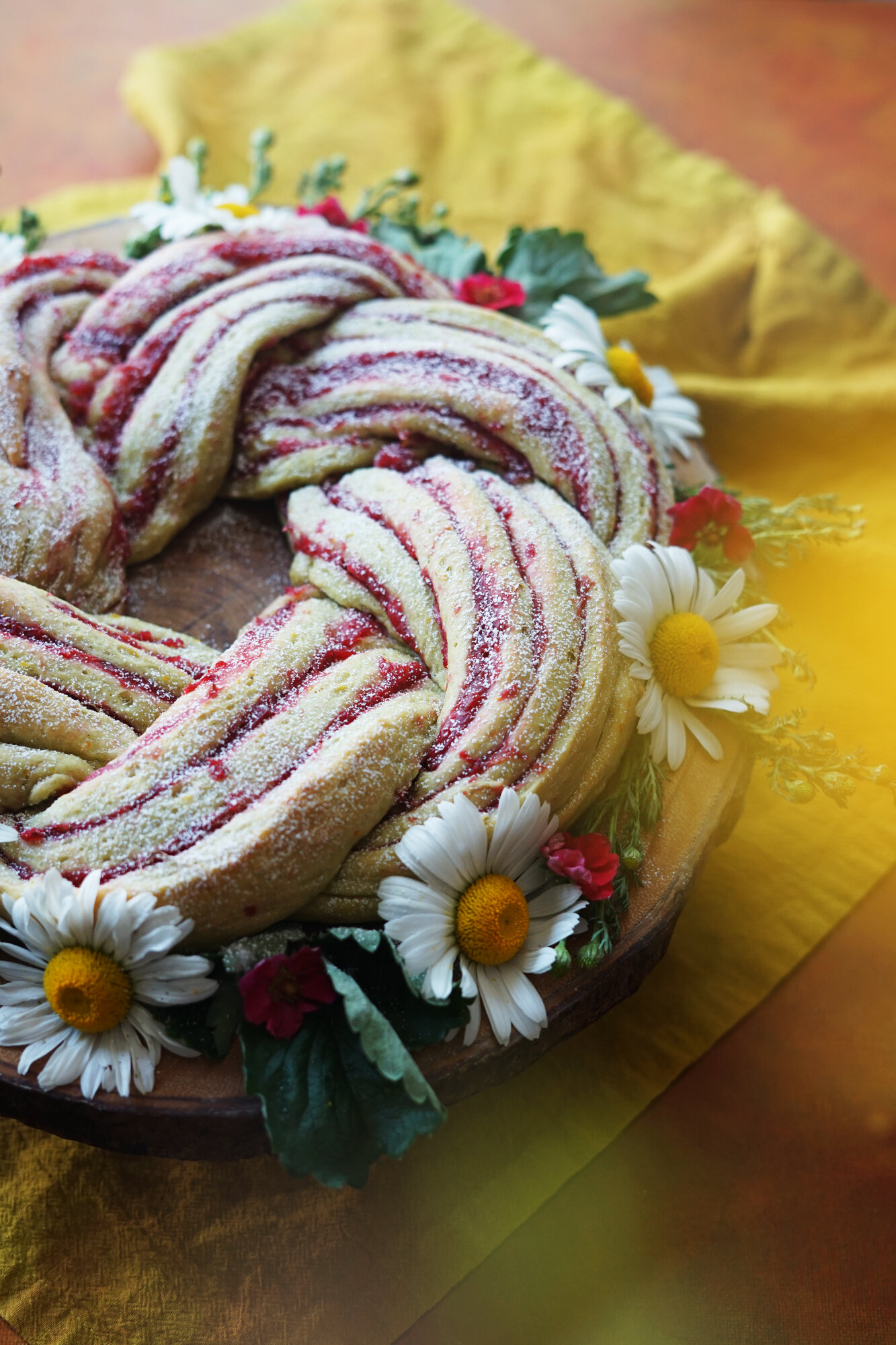
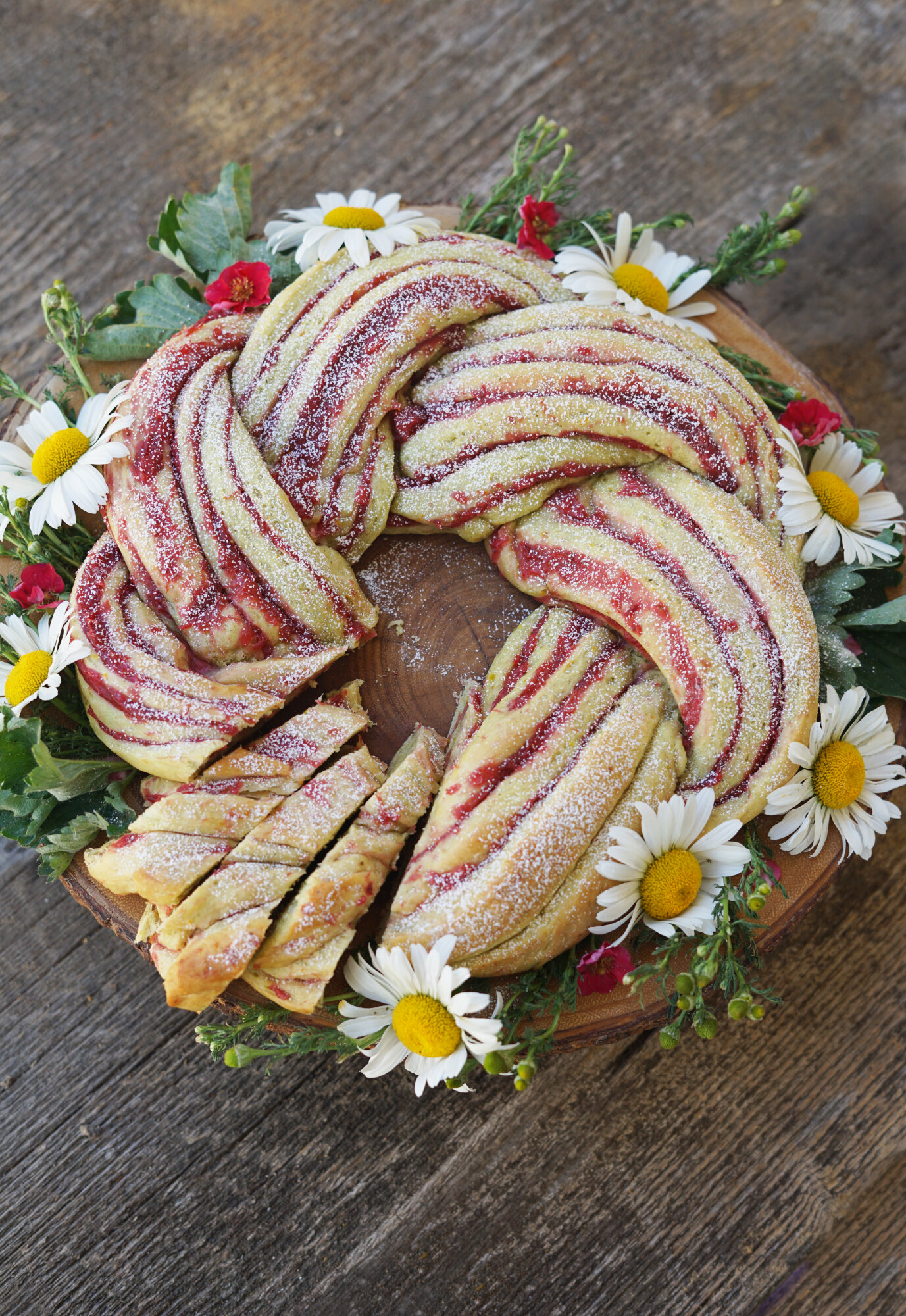
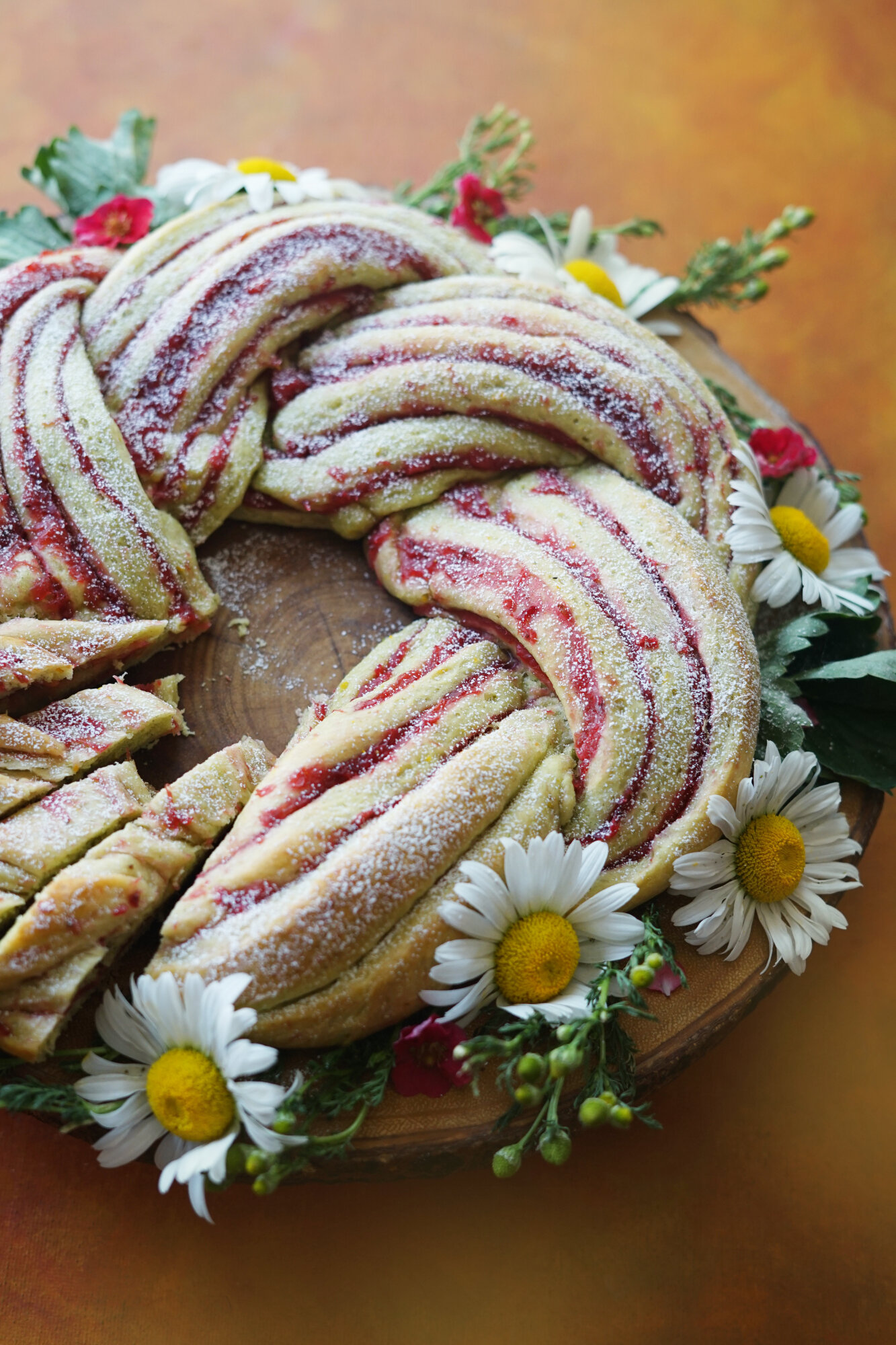
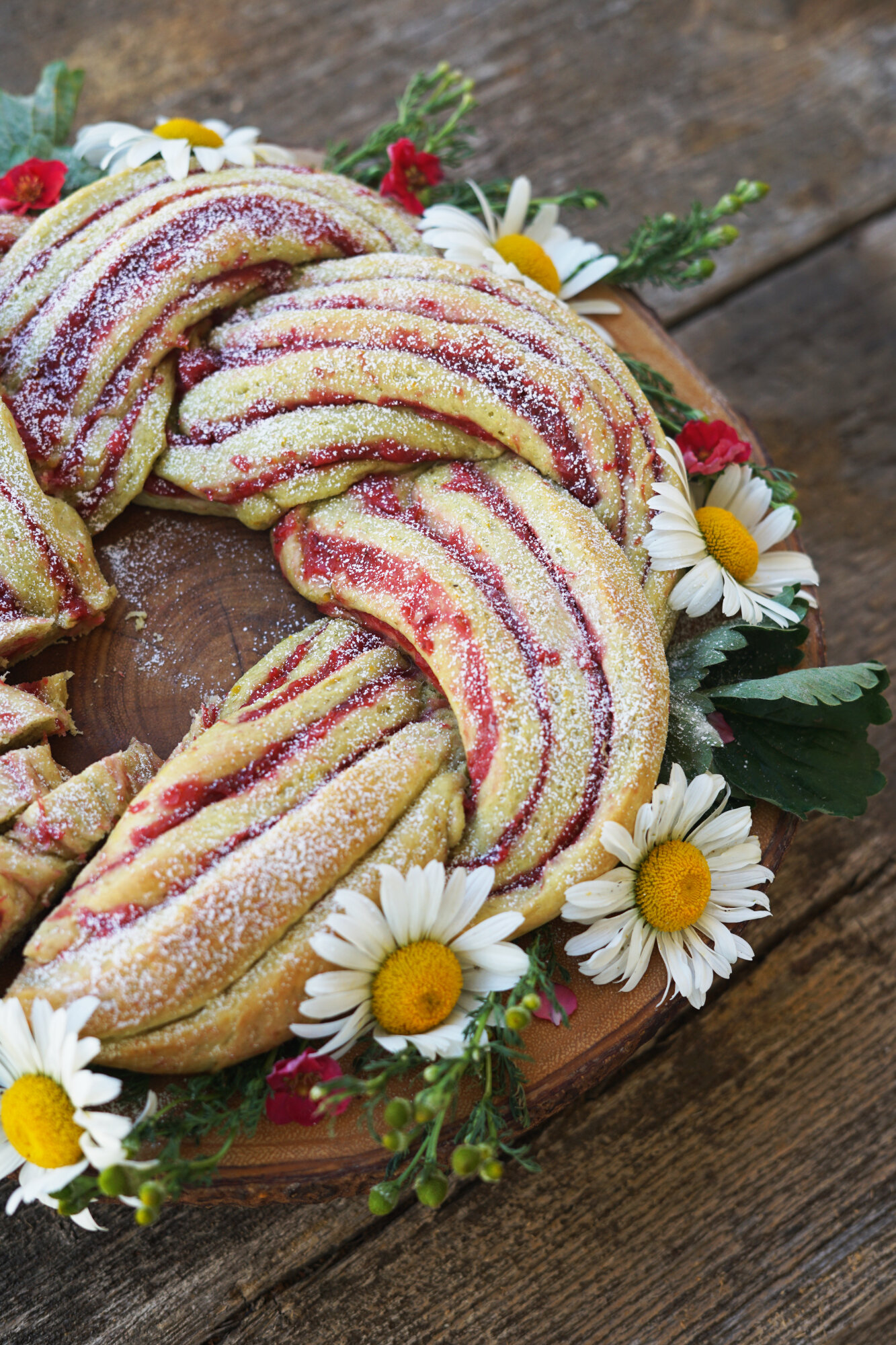

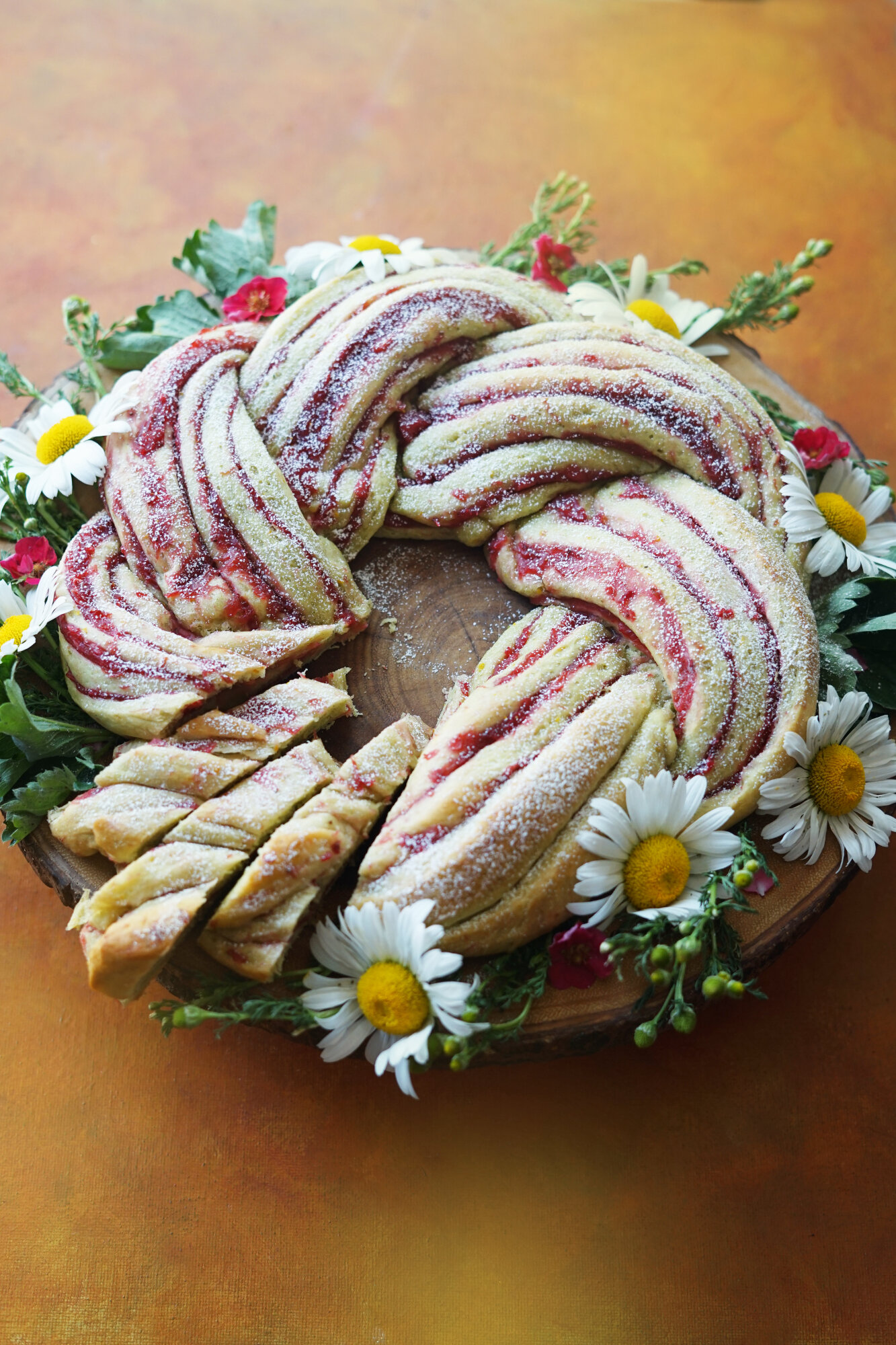
Join me for a little winter night magic as we bake this cake full of rich seasonal flavors and black cocoa!